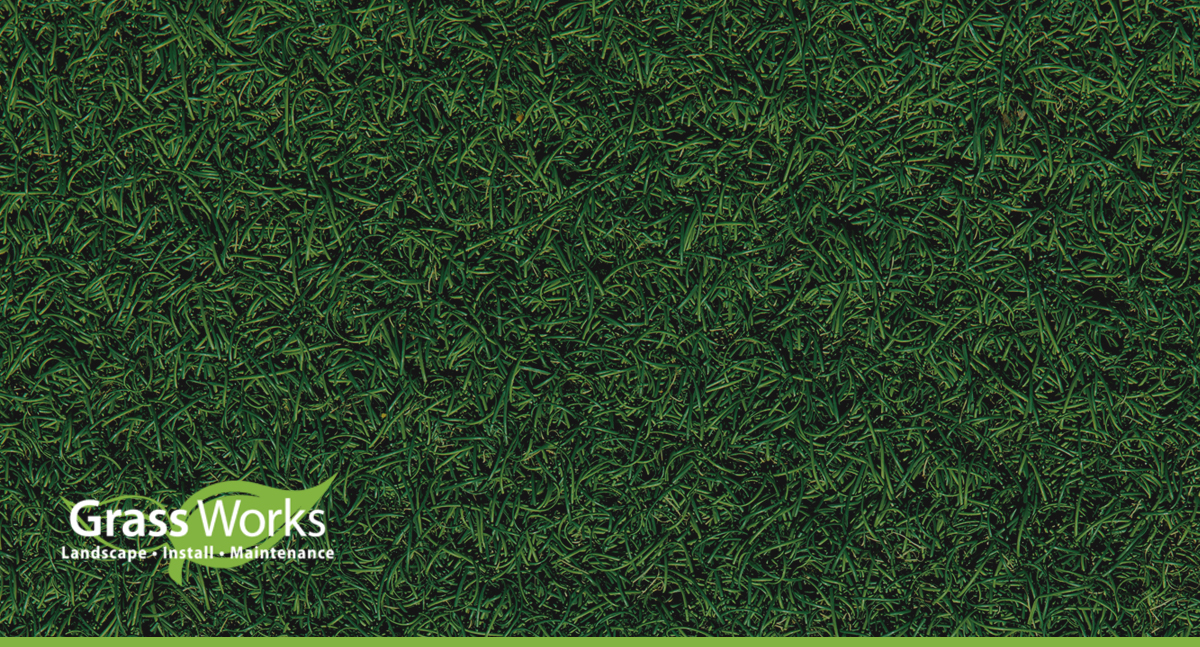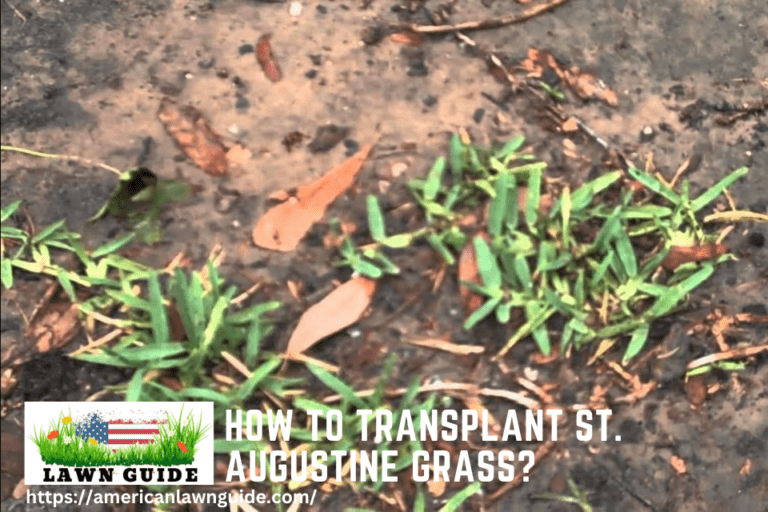Water deeply and consistently. Apply a balanced fertilizer and ensure proper sunlight exposure.
St. Augustine grass can become stressed due to various factors such as drought, poor soil, or improper care. Reviving this grass type involves a few essential steps that promote healthy growth and resilience. Start by ensuring the lawn receives adequate water, especially during dry periods.
Use a balanced fertilizer to provide necessary nutrients. Regular mowing at the correct height helps maintain its health. Removing thatch and aerating the soil can also improve root development. Address any pest or disease issues promptly. These steps can help restore the lush, green appearance of St. Augustine grass, making your lawn vibrant and healthy once again.

How to Identify St. Augustine Grass Health?
Healthy St. Augustine grass is lush and green. It can handle foot traffic and thrives in warm climates. But sometimes, it can look weak. Identifying the health of your grass is the first step to reviving it.
Signs Of Dormancy Vs. Damage
Dormancy means the grass is resting. It usually happens in winter or during drought.
- Color: Dormant grass turns brown but does not die.
- Texture: It feels dry but is not brittle.
- Roots: Roots stay alive and can grow again.
Damage is different. It means the grass is hurt and may need fixing.
- Color: Damaged grass may have yellow or brown patches.
- Texture: It feels brittle and breaks easily.
- Roots: Roots may be weak or rotten.
Common Causes Of Decline
Several factors can cause St. Augustine grass to decline:
| Cause | Description |
|---|---|
| Drought | Lack of water makes grass dry and weak. |
| Pests | Insects like chinch bugs damage the grass. |
| Diseases | Fungi and bacteria can make grass sick. |
| Poor Soil | Soil lacking nutrients leads to weak grass. |
| Overwatering | Too much water can rot the roots. |
Optimal Conditions For St. Augustine Grass
St. Augustine grass thrives when provided with the best conditions. Understanding these conditions helps in maintaining a lush, green lawn. Let’s explore the key factors that contribute to the optimal growth of St. Augustine grass.
Sunlight And Shade Requirements
St. Augustine grass needs at least 6-8 hours of sunlight each day. It grows well in full sun and can tolerate partial shade. Too much shade can result in thin, weak grass. Ensure your lawn gets enough light for the grass to flourish.
Watering Schedule And Techniques
Proper watering is crucial for St. Augustine grass. Water the grass deeply and infrequently to promote deep root growth. A good schedule is to water once or twice a week. Adjust the watering frequency based on the weather and soil conditions.
Here’s a quick watering guide:
- Early Morning: Water between 4 AM and 9 AM.
- Deep Watering: Ensure the soil is moist 6 inches deep.
- Avoid Overwatering: Too much water can cause root rot.
Ideal Soil Composition And Ph
St. Augustine grass prefers well-drained soil. The soil should be rich in organic matter. Ideal soil composition includes a mix of sand, silt, and clay.
Maintaining the correct pH level is also important. The optimal pH range for St. Augustine grass is between 5.0 and 8.5. You can test your soil’s pH using a soil testing kit.
| Soil Type | Characteristics |
|---|---|
| Sandy Soil | Drains well, may need more frequent watering. |
| Loamy Soil | Ideal mix of sand, silt, and clay. |
| Clay Soil | Holds water, may need good drainage. |
Comprehensive Revitalization Techniques
Reviving St. Augustine grass can bring your lawn back to life. This guide will cover essential revitalization techniques. You’ll learn how to aerate, dethatch, fertilize, and manage pests and diseases.
Aeration And Dethatching
Aeration involves creating small holes in the soil. This allows air, water, and nutrients to reach the grass roots. Use a lawn aerator tool for best results. Aerate your lawn at least once a year.
Dethatching removes the layer of dead grass and roots. Thatch can block water and nutrients from reaching the soil. Use a dethatching rake to clean up your lawn. Perform dethatching in early spring or fall for optimal results.
Fertilization Strategies
Proper fertilization is vital for healthy St. Augustine grass. Here are some key strategies:
- Use a balanced fertilizer with equal parts nitrogen, phosphorus, and potassium.
- Apply fertilizer in late spring and early fall.
- Water the lawn after fertilization to help nutrients reach the roots.
| Season | Fertilizer Type | Application Rate |
|---|---|---|
| Spring | High Nitrogen | 1 pound per 1000 sq. ft. |
| Fall | Balanced | 1 pound per 1000 sq. ft. |
Pest And Disease Management
Manage pests and diseases to keep your grass healthy. Here are some key points:
- Inspect your lawn regularly for signs of pests or diseases.
- Use natural pest control methods like neem oil or diatomaceous earth.
- Apply fungicides if you notice fungal diseases.
Common pests include chinch bugs and grubs. Treat these pests promptly to prevent damage. Fungal diseases like brown patch can harm your grass. Use fungicides to treat affected areas.

How to Care For St. Augustine Grass?
Reviving St. Augustine grass can be simple with the right care. Proper maintenance ensures your lawn stays lush and green. Here are some essential tips for keeping your grass healthy.
Mowing Practices For Vigorous Growth
Regular mowing keeps St. Augustine grass strong. Mow the grass to a height of 3-4 inches. This height helps the grass stay healthy and fight off weeds. Use sharp mower blades to avoid damaging the grass.
Follow a consistent mowing schedule. Cut no more than one-third of the grass blade at a time. This practice encourages robust growth.
Seasonal Care And Overwintering
St. Augustine grass needs special care in different seasons. In spring, fertilize the lawn to boost growth. Water the grass deeply but less often. This helps the roots grow strong.
In summer, watch for pests and diseases. Apply treatments as needed. In fall, apply a pre-emergent herbicide to control weeds. During winter, reduce watering to prevent root rot.
Troubleshooting Tips
Sometimes, your St. Augustine grass might face issues. Here are some common problems and solutions:
- Yellowing Grass: This may indicate a nutrient deficiency. Apply a balanced fertilizer.
- Brown Patches: Check for pests or fungal infections. Use appropriate treatments.
- Thinning Grass: Overseed the area and water regularly to promote new growth.
Regularly inspect your lawn for signs of trouble. Early detection and treatment can save your grass.

Frequently Asked Questions
How Do I Revive St. Augustine Grass?
Water deeply and consistently. Apply a balanced fertilizer. Remove weeds and provide proper sunlight. Aerate soil for better growth.
What Causes St. Augustine Grass To Die?
Common reasons include drought, pests, diseases, poor soil conditions, and improper mowing practices. Ensure proper care to prevent these issues.
Can Mowing Height Affect St. Augustine Grass?
Yes, mowing too low can stress the grass. Maintain a mowing height of 2. 5 to 4 inches for optimal health.
What Type Of Fertilizer Is Best For St. Augustine Grass?
Use a balanced, slow-release fertilizer with equal parts nitrogen, phosphorus, and potassium. Apply during the growing season for best results.
Conclusion
Reviving St. Augustine grass is simple with the right steps. Follow proper watering, mowing, and fertilizing techniques. Address pests and diseases promptly. Regular maintenance ensures a lush, green lawn. Keep your grass healthy and enjoy a beautiful yard all year round.
Start implementing these tips today for vibrant St. Augustine grass.
{ “@context”: “https://schema.org”, “@type”: “FAQPage”, “mainEntity”: [ { “@type”: “Question”, “name”: “How do I revive St. Augustine grass?”, “acceptedAnswer”: { “@type”: “Answer”, “text”: “Water deeply and consistently. Apply a balanced fertilizer. Remove weeds and provide proper sunlight. Aerate soil for better growth.” } } , { “@type”: “Question”, “name”: “What causes St. Augustine grass to die?”, “acceptedAnswer”: { “@type”: “Answer”, “text”: “Common reasons include drought, pests, diseases, poor soil conditions, and improper mowing practices. Ensure proper care to prevent these issues.” } } , { “@type”: “Question”, “name”: “Can mowing height affect St. Augustine grass?”, “acceptedAnswer”: { “@type”: “Answer”, “text”: “Yes, mowing too low can stress the grass. Maintain a mowing height of 2.5 to 4 inches for optimal health.” } } , { “@type”: “Question”, “name”: “What type of fertilizer is best?”, “acceptedAnswer”: { “@type”: “Answer”, “text”: “Use a balanced, slow-release fertilizer with equal parts nitrogen, phosphorus, and potassium. Apply during the growing season for best results.” } } ] }



